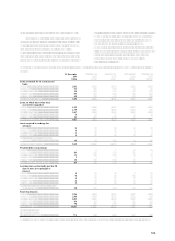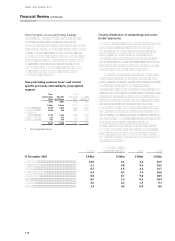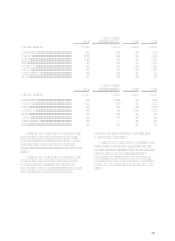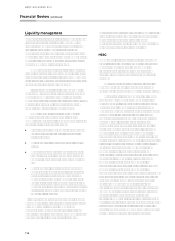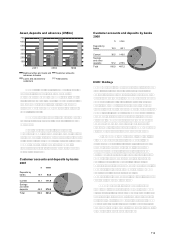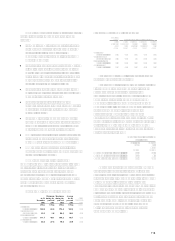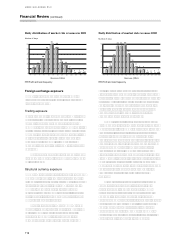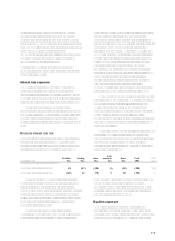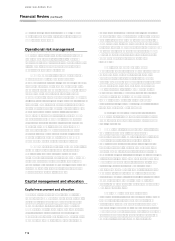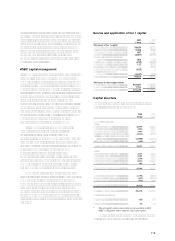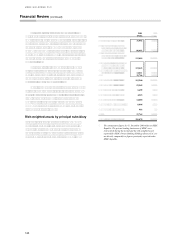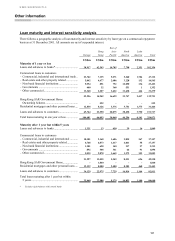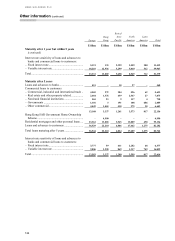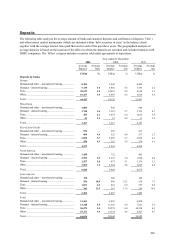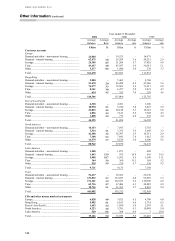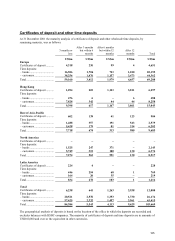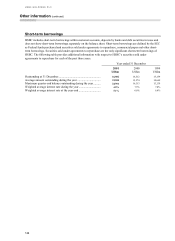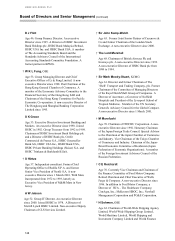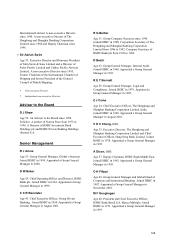HSBC 2001 Annual Report Download - page 121
Download and view the complete annual report
Please find page 121 of the 2001 HSBC annual report below. You can navigate through the pages in the report by either clicking on the pages listed below, or by using the keyword search tool below to find specific information within the annual report.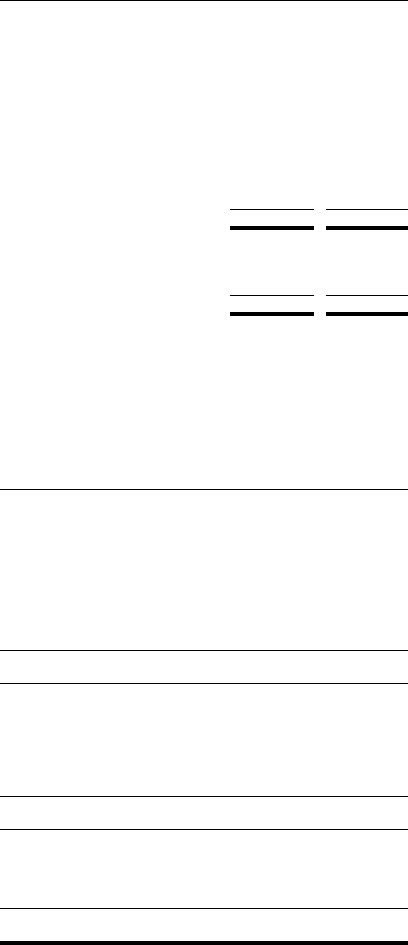
119
collateral or guarantees. Banking book off-balance-
sheet items giving rise to credit, foreign exchange or
interest rate risk are assigned weights appropriate to
the category of the counterparty, taking into account
any eligible collateral or guarantees. Trading book
risk-weighted assets are determined by taking into
account market-related risks, such as foreign
exchange, interest rate and equity position risks, as
well as counterparty risk.
HSBC capital management
It is HSBCs policy to maintain a strong capital base
to support the development of HSBCs business.
HSBC seeks to maintain a prudent balance between
the different components of its capital and, in HSBC
Holdings, between the composition of its capital and
that of its investment in subsidiaries. This is achieved
by each subsidiary managing its own capital within
the context of an approved annual plan which
determines the optimal amount and mix of capital to
support planned business growth and to meet local
regulatory capital requirements. Capital generated in
excess of planned requirements is paid up to HSBC
Holdings normally by way of dividends and
represents a source of strength for HSBC.
It is HSBC policy that HSBC Holdings is
primarily a provider of equity capital to its
subsidiaries with such equity investment
substantially funded by HSBC Holdings own equity
issuance. Non-equity tier 1 and subordinated debt
requirements of major subsidiaries are normally met
by their own market issuance within HSBC
guidelines regarding market and investor
concentration, cost, market conditions, timing and
the effect on the components and maturity profile of
HSBC capital. Subordinated debt requirements of
other HSBC companies are provided internally.
HSBC recognises the impact on shareholder
returns of the level of equity capital employed within
HSBC and seeks to maintain a prudent balance
between the advantages and flexibility afforded by a
strong capital position and the higher returns on
equity possible with greater leverage. In the current
environment HSBC uses a benchmark tier 1 capital
ratio of 8 per cent in considering its long term capital
planning.
Source and application of tier 1 capital
2001
US$m
2000
US$
m
Movement of tier 1 capital
Opening tier 1 capital........................... 34,620 28,533
Attributable profits............................... 5,406 6,628
add back: goodwill amortisatio
n
......... 807 525
Dividends.............................................
(
4,467 )
(
4,010 )
add back: shares issued in lieu of
dividends......................................... 866 944
Other movement in goodwill deducte
d
.
(
199)
(
9,372 )
Shares issue
d
........................................ 112 8,794
Issue of innovative tier 1 capital...........
–
3,512
Redemption of preference shares .........
(
825)
Other (including exchange
movements).....................................
(
1,247 )
(
934)
Closing tier 1 capital ............................ 35,073 34,620
Movement in risk-weighted assets
Opening risk-weighted assets............... 383,687 336,126
Movements .......................................... 7,791 47,561
Closing risk-weighted assets ................ 391,478 383,687
Capital structure
The table below sets out the analysis of regulatory
capital at the end of 2001 and 2000.
2001
US$m
2000
US$
m
Composition of capital
Tier 1:
Shareholders funds .............................. 45,979 45,570
Minority interests.................................. 3,515 4,419
Innovative tier 1 securities .................... 3,467 3,512
Less : property revaluation reserves ...... (2,271 ) (2,611)
goodwill capitalised and intangible
assets.......................................... (14,989) (15,597 )
own shares held*.............................. (628) (673 )
Total qualifying tier 1 capital ................ 35,073 34,620
Tier 2:
Property revaluation reserves ................ 2,271 2,611
General provisions ................................ 2,091 2,132
Perpetual subordinated debt ................. 3,338 3,531
Term subordinated debt......................... 9,912 10,224
Minority interest in tier 2 capital........... 693 697
Total qualifying tier 2 capital ................ 18,305 19,195
Unconsolidated investments.................. (1,781 ) (1,463 )
Investments in other banks ...................
(
627
)
(
1
,
241
)
Other deductions ................................... (116 ) (147)
Total capital .......................................... 50,854 50,964
Total risk-weighted assets ..................... 391,478 383,687
Capital ratios (per cent):
Total capital .......................................... 13.0 13.3
Tier 1 capital......................................... 9.0 9.0
* This principally reflects shares held in trust available to fulfil
HSBC’s obligations under employee share option plans.
The above figures were computed in accordance
with the EU Banking Consolidation Directive.


